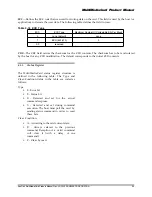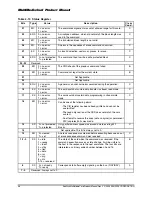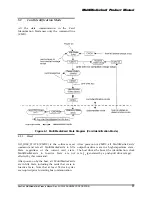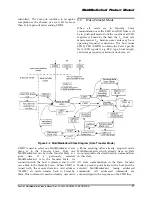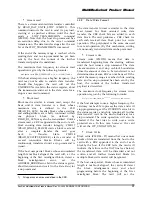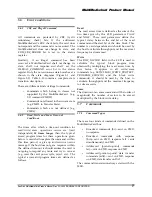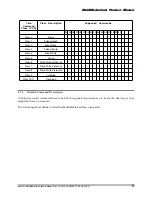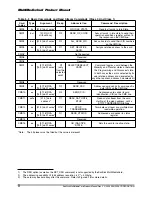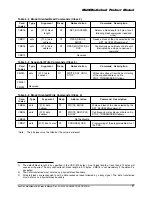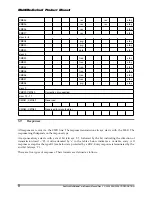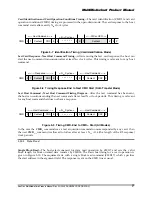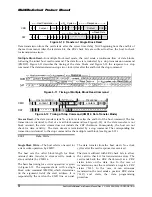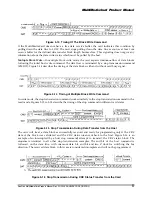
MultiMediaCard Product Manual
SanDisk MultiMediaCard Product Manual Rev. 2 © 2000 SANDISK CORPORATION
48
5.7.2
Command Format
(
Command length 48 bits, 2.4
µ
s @ 20 MHz)
0
1
bit 5...bit 0
bit 31...bit 0
bit 6...bit 0
1
start bit
host
command
argument
CRC7
1
end bit
Commands and arguments are listed in Table 5-3 through Table 5-9.
7-bit CRC Calculation: G(x) = x
7 +
x
3 +
1
M(x) = (start bit)
∗
x
39
+ (host bit)
∗
x
38
+...+ (last bit before CRC)
∗
x
0
CRC[6...0] = Remainder[(M(x)
∗
x
7
)/G(x)]
5.7.3
Command Classes
The command set of the MultiMediaCard is divided into several classes (See Table 5-2). Each class
supports a set of MultiMediaCard functions.
The supported Card Command Classes (CCC) are coded as a parameter in the card specific data (CSD)
register of each card, providing the host with information on how to access the card.
Table 5-2 Card Command Classes (CCCs)
C a r d
Command
Class (CCC)
Class Description
Supported Commands
0
1
2
3
4
7
9 10 11 12 13 15 16 17 18 20
Class 0
Basic
+
+
+
+
+
+
+
+
+
+
+
Class 1
Stream Read
+
Class 2
Block Read
+
+
+
Class 3
Stream Write
+
Class 4
Block Write
+
Class 5
Erase
Class 6
Write Write-Protection
Class 7
Read Write-Protection
Class 8
Erase Write-Protection
Class 9
I/O Mode
2
Class 10-11
Reserved
1)
7-bit Cyclic Redundancy Check.
2)
I/O mode class is not supported by the SanDisk MultiMediaCard.


